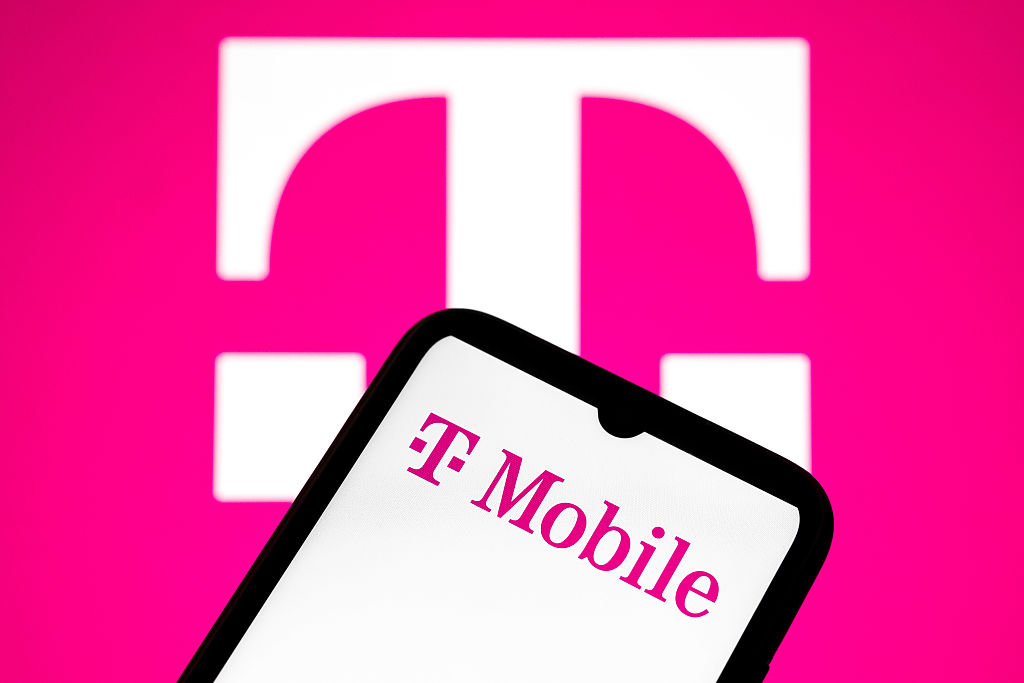Why Target-Date Funds Are Off-Target for Many Investors
Target-date funds might be a bigger gamble than you're willing to take. Folio Investing offers portfolios with different levels of risk.

Analysts once called companies like General Electric and Xerox “one-decision stocks”—buy ’em and forget ’em, then reap the benefits years later. Today, target-date mutual funds are one-decision retirement plans. But just like simple solutions to other complex problems, they have pitfalls. I’m not against these funds, but most are far from perfect.
Still, at a time when investors are turned off by stock mutual funds, it’s no surprise that target funds are outrageously popular. With a single purchase, investors have an amazingly handy way of constructing an evolving lifetime portfolio—in many cases, one with low fees.
According to the Investment Company Institute, target funds’ assets have jumped more than eightfold since 2004. They accounted for 12.5% of all holdings in employer-sponsored defined-contribution retirement accounts—401(k) plans and the like—in 2010, and by 2020 they are expected to account for 48%, or nearly $4 trillion.
From just $107.88 $24.99 for Kiplinger Personal Finance
Become a smarter, better informed investor. Subscribe from just $107.88 $24.99, plus get up to 4 Special Issues

Sign up for Kiplinger’s Free Newsletters
Profit and prosper with the best of expert advice on investing, taxes, retirement, personal finance and more - straight to your e-mail.
Profit and prosper with the best of expert advice - straight to your e-mail.
How Target-Date Funds Work
A target-date fund typically consists of other mutual funds and exchange-traded funds. What makes a target fund different from other funds of funds is that the fund’s portfolio shifts over time. As you get closer to retirement or some other milestone (that is, the “target date,” such as 2030, that’s in a fund’s name), the fund becomes less risky. When you hit the date, you don’t have to sell—most of the funds are built to be held during retirement, too (see When a Target Fund Nears Its Target).
Most target funds reduce risk by slowly changing their allocations of stocks, bonds and cash over the years, a feature known as a glide path. For example, Vanguard Target Retirement 2050 (symbol VFIFX), geared to people retiring in about 40 years, currently allocates its assets this way: Nearly 90% in stocks, 10% in bonds and virtually nothing in cash. Vanguard Target Retirement 2015 (VTXVX), whose investors are on the brink of retiring, holds 55% in stocks and 45% in bonds.
The Risks of Target-Date Funds
Three-fourths of employers that use Vanguard funds in their 401(k) plans have selected target-date funds as default investments for workers who don’t want to choose where their retirement deductions go. And that makes sense. These funds are ideal for people who prefer to pay little or no attention to their investments but would like to try to build a nice nest egg.
For the rest of us, however, target funds have some problems. The main one is that there’s more to limiting risk than adjusting a portfolio’s allocation. You can’t assume that merely moving money from stocks to bonds will keep you safe.
Real life is more complicated. Consider Fidelity Freedom 2020 (FFFDX). Its asset allocation is 49% in stocks, 42% in bonds, 6% in commodities and 3% in cash. That seems pretty risk-averse. But look deeper and you find that many of the bonds have long maturities or originate in risky emerging markets.
The danger is that managers will reach for higher returns—and increase the volatility of their funds—by buying risky assets within each category. The year 2008 was a good test, and many target funds flunked. T. Rowe Price Retirement 2010 (TRRAX) dropped 27%. Fidelity’s 2010 target fund (FFFCX) lost 25%; Vanguard’s (VTENX), 21%. And this was two years before theoretical retirement!
Why do target funds emphasize raw asset allocation alone? Because, as a white paper by Folio Investing, an innovative brokerage firm based in McLean, Va., argues, the approach “is attractive for its simplicity … and easy to describe and monitor.” Unfortunately, the paper says, it is “also a severely flawed design that serves investors poorly.”
The reason is that a portfolio’s risk is determined not only by the risk of each asset class but also by how correlated those classes are. That is, investing in assets that tend to move in lock step will produce more-volatile returns. But when two assets have lower correlations, one might lose 30% in a given year, but the other gains 10%. So, assuming you had half of your portfolio in each, you’d lose 10%—not the 30% you’d lose if the assets were tightly correlated.
Unfortunately, we live in an era in which correlations across many major categories of investments are high. You have to search hard to find low-correlation asset classes—and you must be mindful that these relationships can change. (Lately, for instance, when stocks fall, Treasury bonds rise in price, in part because U.S. debt is seen as a safe haven in tough times. But in the past, stocks and bonds have gone up and down in tandem—a pattern that might reassert itself.)
Folio Investing's "Ready-Made" Funds
The best way to reduce risk may be by owning a portfolio that, on the surface, appears to have little coherence. For instance, a portfolio assembled by Folio Investing, Target 2025 Moderate Folio, has 85% of its assets in five ETFs holding small-company stocks, energy stocks, long-term Treasury bonds, commodities and insured municipal bonds. Much smaller amounts are in ETFs that focus on real estate trusts, emerging-markets stocks, technology shares and corporate bonds.
Folio is not a mutual fund house but a firm that packages and maintains customized portfolios of stocks and funds chosen by investors, as well as “ready-made” funds that Folio assembles itself. The ready-made Target Date Folios come in three risk levels for each date: aggressive, moderate and conservative.
Instead of creating a glide path based on asset allocation, Folio’s strategy targets risk alone. Its computer-driven analysis finds the right mix of ETFs that will, for example, carry 80% of the risk of the S&P 500 when an investor is 15 years from retirement and 50% of that risk at retirement. Of course, altering a portfolio’s level of risk will almost always cause its asset allocation to shift as well.
The approach doesn’t have much history yet, but it seems to work. Folio Investing says that from the start of 2008, when it launched the Target Folios, through June 30, 2012, its moderate portfolios consistently outpaced the average results of its three largest mutual fund rivals. As an example, Folio’s moderate 2030 product returned an annualized 2.2% over that period (after fees), while the 2030 funds offered by Fidelity, T. Rowe Price and Vanguard gained an average of just 0.1% annualized over that period.
I like that Folio offers three levels of risk for each date. For my taste, most conventional target-date funds take on too much risk. For example, T. Rowe Price Retirement 2030 (TRRCX) has 83% of its assets in stocks. I think someone retiring in 2030 should have no more than 60% in stocks. (One way to mitigate this problem is to own a fund with a target date ten or 15 years in advance of your actual retirement date.)
Folio has another advantage: It’s cheap. It charges a flat $290 a year under its unlimited brokerage plan. If you owned a target-date portfolio worth $100,000 with Folio, you’d be paying about 0.3% of assets for expenses. Compare that with an expense ratio of 0.7% for both the Fidelity and T. Rowe Price target-date funds and 0.2% for funds run by Vanguard.
One drawback to Folio’s approach is that its portfolios can be mystifying. The Target 2020 Conservative Folio has 15% of its assets in a global technology ETF, and many of the folios hold municipal bonds. Folio CEO Steve Wallman, a former commissioner at the Securities and Exchange Commission, says the portfolios include munis because they do not track other assets closely. By contrast, the Target Folios don’t own any ETFs that track the S&P 500 index or focus on value stocks.
When the going gets rough, investors often panic and make mistakes. One reason I find the Target Folios so appealing is that they offer investors the potential of a smoother ride than traditional target funds without any fall-off in results. I’d like to see the larger target funds move in Folio’s direction, by focusing on risk, not merely asset allocation, and becoming more conservative. Until they do, be wary.
James K. Glassman, executive director of the George W. Bush Institute in Dallas, is author of Safety Net: The Strategy for De-Risking Your Investments in a Time of Turbulence (Crown Business).
Kiplinger's Investing for Income will help you maximize your cash yield under any economic conditions. Download the premier issue for free.
Profit and prosper with the best of Kiplinger's advice on investing, taxes, retirement, personal finance and much more. Delivered daily. Enter your email in the box and click Sign Me Up.

-
 The Retirement Donor's Checklist: Key Deadlines by Gift Type
The Retirement Donor's Checklist: Key Deadlines by Gift TypeRetirees have some charitable contribution options that can help avoid spikes in income from RMDS and capital gains.
-
 Cooler Inflation Supports a Relief Rally: Stock Market Today
Cooler Inflation Supports a Relief Rally: Stock Market TodayInvestors, traders and speculators welcome much-better-than-hoped-for core CPI data on top of optimism-renewing AI earnings.
-
 Are T-Mobile's Prepaid Perks a Home Run or a Strikeout?
Are T-Mobile's Prepaid Perks a Home Run or a Strikeout?T-Mobile's prepaid lineup promises MLB.TV, T-Mobile Tuesdays and hotspot data. But do the perks make it worth switching?
-
 5 Big Tech Stocks That Are Bargains Now
5 Big Tech Stocks That Are Bargains Nowtech stocks Few corners of Wall Street have been spared from this year's selloff, creating a buying opportunity in some of the most sought-after tech stocks.
-
 How to Invest for a Recession
How to Invest for a Recessioninvesting During a recession, dividends are especially important because they give you a cushion even if the stock price falls.
-
 10 Stocks to Buy When They're Down
10 Stocks to Buy When They're Downstocks When the market drops sharply, it creates an opportunity to buy quality stocks at a bargain.
-
 How Many Stocks Should You Have in Your Portfolio?
How Many Stocks Should You Have in Your Portfolio?stocks It’s been a volatile year for equities. One of the best ways for investors to smooth the ride is with a diverse selection of stocks and stock funds. But diversification can have its own perils.
-
 An Urgent Need for Cybersecurity Stocks
An Urgent Need for Cybersecurity Stocksstocks Many cybersecurity stocks are still unprofitable, but what they're selling is an absolute necessity going forward.
-
 Why Bonds Belong in Your Portfolio
Why Bonds Belong in Your Portfoliobonds Intermediate rates will probably rise another two or three points in the next few years, making bond yields more attractive.
-
 140 Companies That Have Pulled Out of Russia
140 Companies That Have Pulled Out of Russiastocks The list of private businesses announcing partial or full halts to operations in Russia is ballooning, increasing economic pressure on the country.
-
 How to Win With Game Stocks
How to Win With Game Stocksstocks Game stocks are the backbone of the metaverse, the "next big thing" in consumer technology.